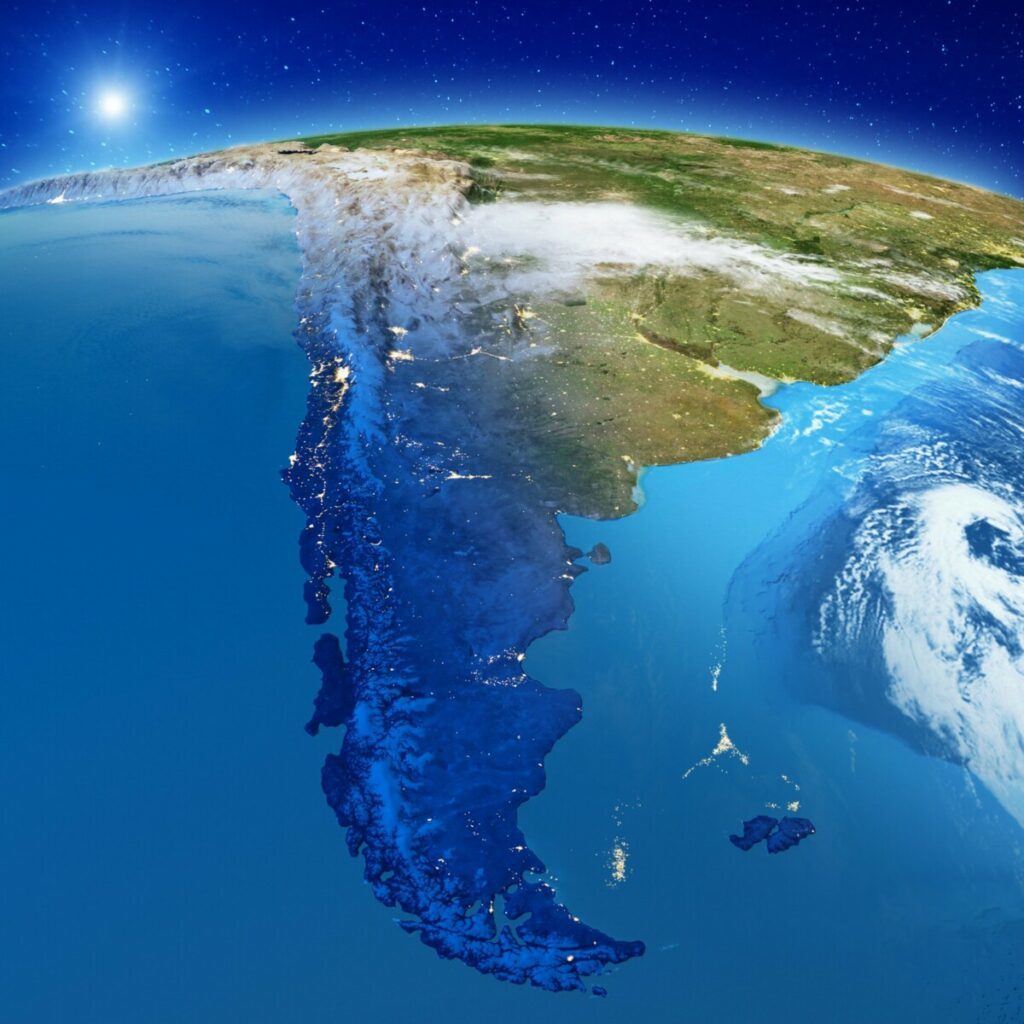
Spanish is the world’s second-most-spoken native language. For a world with more than 7,100 languages being spoken, this is quite an accomplishment! However, what is the largest Spanish-speaking country in the world?
Argentina is the largest native Spanish-speaking country when viewed by area, covering approximately 1.074 million square miles in total. In terms of population, however, Mexico is the largest Spanish-speaking country, with a population of 128.9 million residents recorded.
Depending on the unit of measurement, namely population or area, the native-speaking Spanish country that is the largest will be different. Read on to see which countries are the largest by area, and which are the largest in terms of population.
Largest Spanish-Speaking Countries By Area

#1 Argentina (1,073,518 square miles)
Of all 21 native Spanish-speaking countries in the world, Argentina is the largest in terms of area covered. In total area, Argentina is just under three-tenths of the United States. It is also the second largest country in all of South America, placing only behind Brazil, whose native language is Portuguese. Argentina is divided geographically into four distinct regions that are known as the Andes mountains, the North, the Pampas, and Patagonia.
The Andes region is primarily composed of the Andes mountains, which are appropriately named. This part of the country is the far western side and borders Bolivia and all of the way down the country of Chile into what is known as Patagonia. The Andes themselves are divided into two sections: the northwest Andes, and the Patagonian Andes, which refers to the distinction of this area in a north and south division.
The North is divided into two separate sections of land as well. Within this larger category, exist the Gran Chaco and Mesopotamia. The Gran Chaco, or Chaco, consists of dry lands spanning the area between the Paraná River, while Mesopotamia refers to the land between the rivers known as Uruguay and Paraná.
In the Pampas region, the lands are plains composed of grasslands. These grassy plains cover both dry and humid areas, which are located on the western and eastern sides of the country, respectively. In referring to these sections, the terms “Dry Pampa” and “Humid Pampa” are commonly used in Argentina.
Patagonia is the fourth and final of the land divisions in Argentina’s geography. This area experiences extremely cold temperatures and reaches from the southernmost part of Pampas down to the end of the country.
With grasslands, humid areas, dry deserts, freezing tundra, plains, and tropical forests, Argentina is a large enough country to experience all kinds of climates. The area consists of nearly every geographic formation, which is to be expected of the largest Spanish-speaking country by area.
#2 Mexico (758,449 square miles)
In total, Mexico covers an area that is approximately 758,400 square miles of land. It is the 14th largest country in the entire world, just behind Saudi Arabia. Geographically, the country is divided into nine distinct regions: Baja California, the Pacific Coastal Lowlands, the Mexican Plateau, the Sierra Madre Oriental, the Sierra Madre Occidental, the Cordillera Neo-Volcánica, the Gulf Coastal Plain, the Southern Highlands, and the Yucatán Peninsula.
#3 Peru (496,224 square miles)
The country of Peru is shaped like a kidney bean, with the “C” shape cupping a portion of Brazil. Peru covers an area of approximately 496,224 square miles in total and borders Ecuador, Colombia, Brazil, Bolivia, and Chile. To the west of Peru is the Pacific Ocean, offering a large section of the coast to the country’s repertoire. Peru is geographically divided into three distinct regions: the Costa (coastal) area on the west, the Sierra/Andes mountains in the center, and the tropical Amazonia forest to the east.
Largest Spanish Speaking Countries By Population
#1 Mexico (128.9 million)
While Argentina covers more geographic areas, Mexico is the largest of all native Spanish-speaking countries in terms of population size. As of 2020, there are approximately 128.9 million people living in Mexico. The country’s population is currently increasing at an annual rate of 1.06%.
The population of Mexico is aging over time. In the year 2015, the median age for the country was 28 years, but by 2055, it is currently estimated to reach a median age of 44. Currently, the birth rate in Mexico is around 18.2 births per 1,000 residents of the country. Unfortunately, this is gradually decreasing as marriage rates diminish and divorce rates increase exponentially. In death rates, Mexico has an average of 5.8 per 1,000 residents in the country.
With these implications continuing to progress, it is estimated that Mexico will decrease in its overall population growth over the next few decades. In fact, the annual growth rate of the country is expected to decrease by an astonishing 50% as early as 2040. The increasing median age, rapidly diminishing marriages, and steady increase in divorces throughout Mexico all attribute to this estimation. Because of these factors, Mexico will likely not be the largest Spanish-speaking country in the world by 2040, but it is not guaranteed.
#2 Colombia (50.88 million)
Colombia’s population has a current growth rate of 1.08% annually. However, the growth rate has been slowly diminishing in recent years. Despite this decrease in speed, the country’s population is still estimated to increase through the year 2050. As recorded in 2019, the country has approximately 1.79 births per woman. The death rate in Colombia is approximately 5.71 deaths per 1,000 residents.
#3 Spain (47.35 million)
The current population of Spain is now approximately 47.35 million people. This population is increasing at a rate between 0.01% and 0.03% annually. The birth rate within the country has remained near 1.35 births per woman in recent years, which is considerably lower than the calculated population replacement rate of 2.1 births per woman. There are approximately 195 births per day within the county, in comparison to the 236 deaths per day in Colombia.
Overall, many different countries across the world speak Spanish, which is nice if you want to travel because if you speak Spanish and visit a Spanish-speaking country, you will likely be able to understand the locals, even if you don’t know region-specific dialects.
